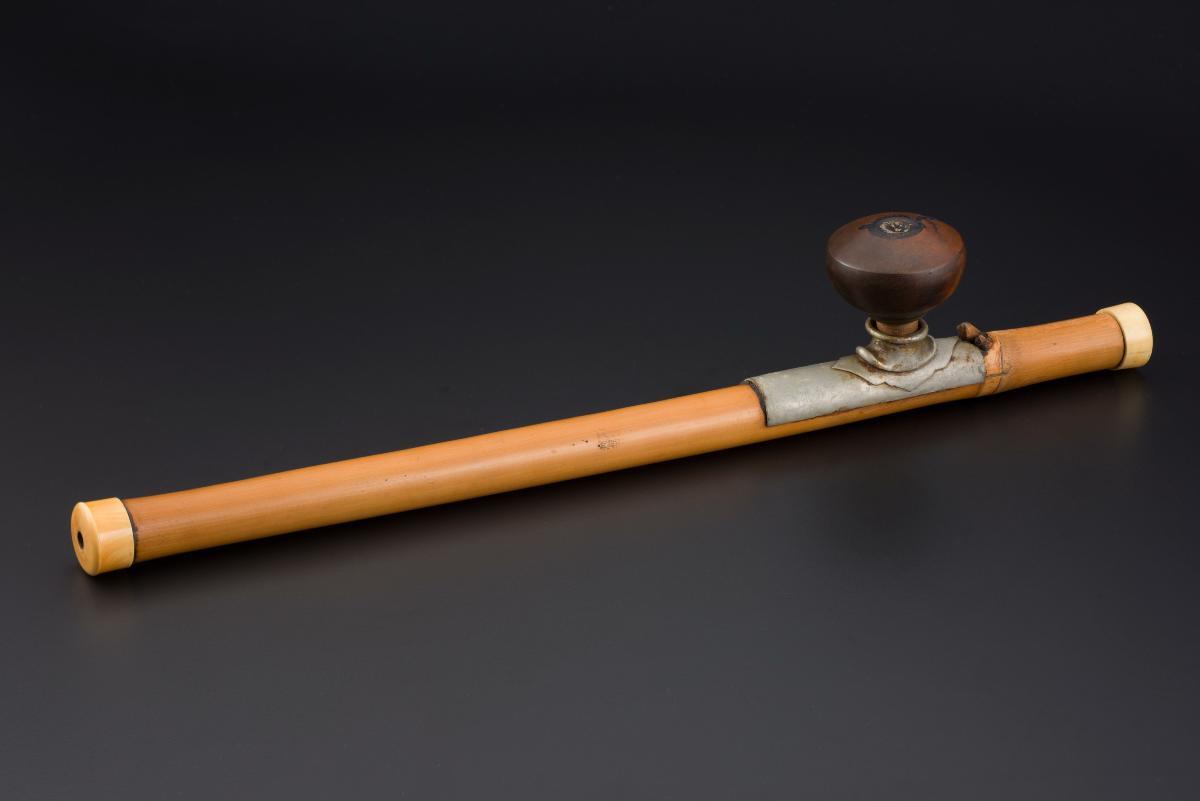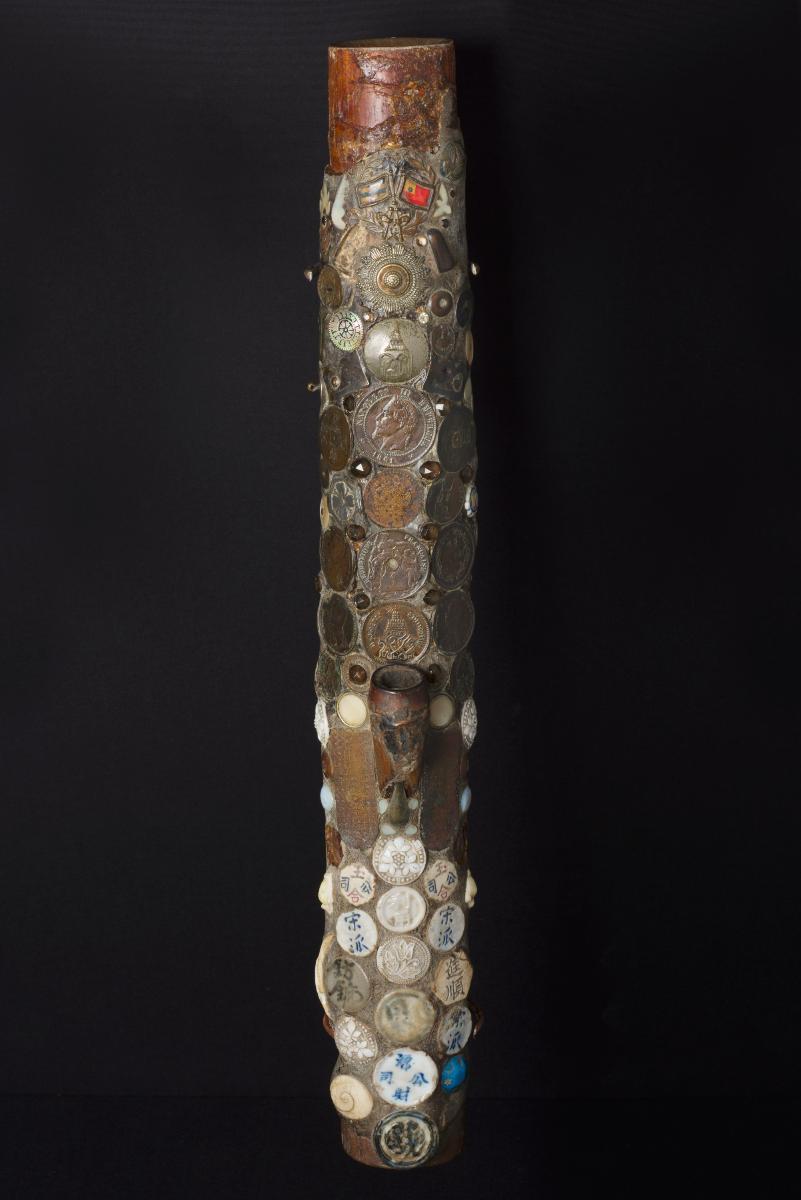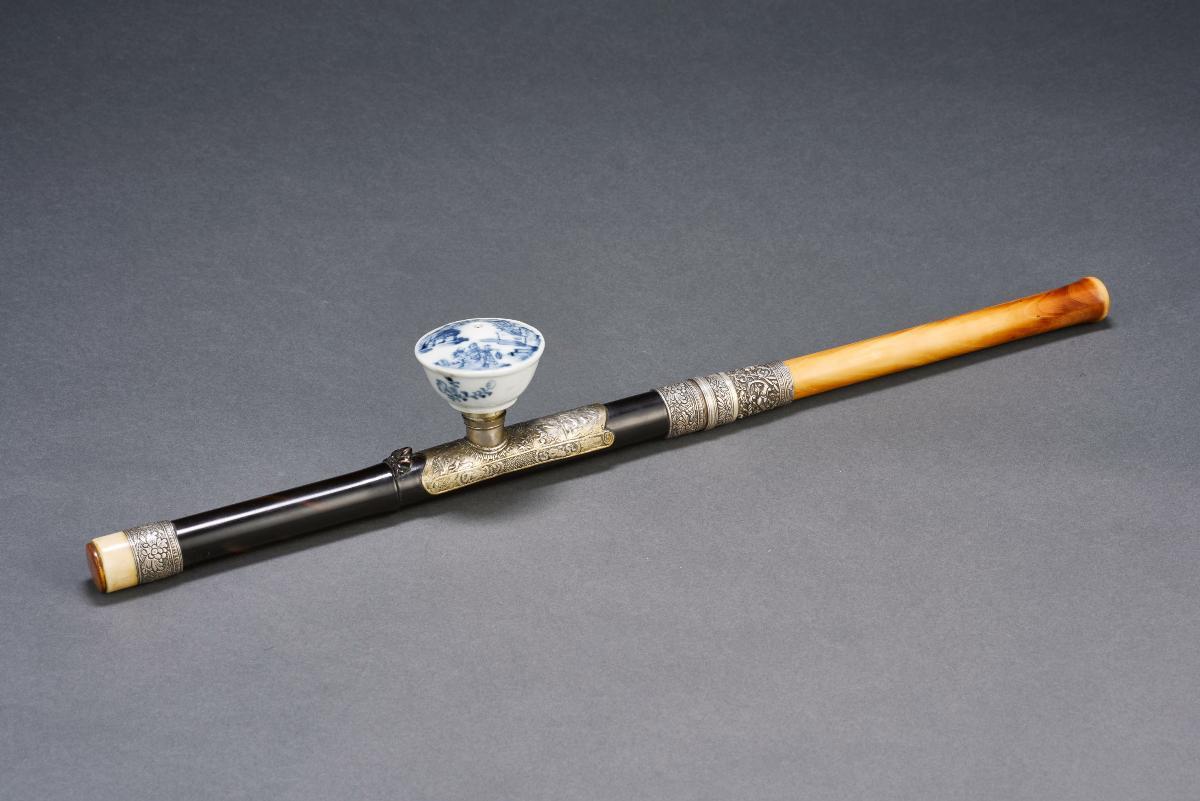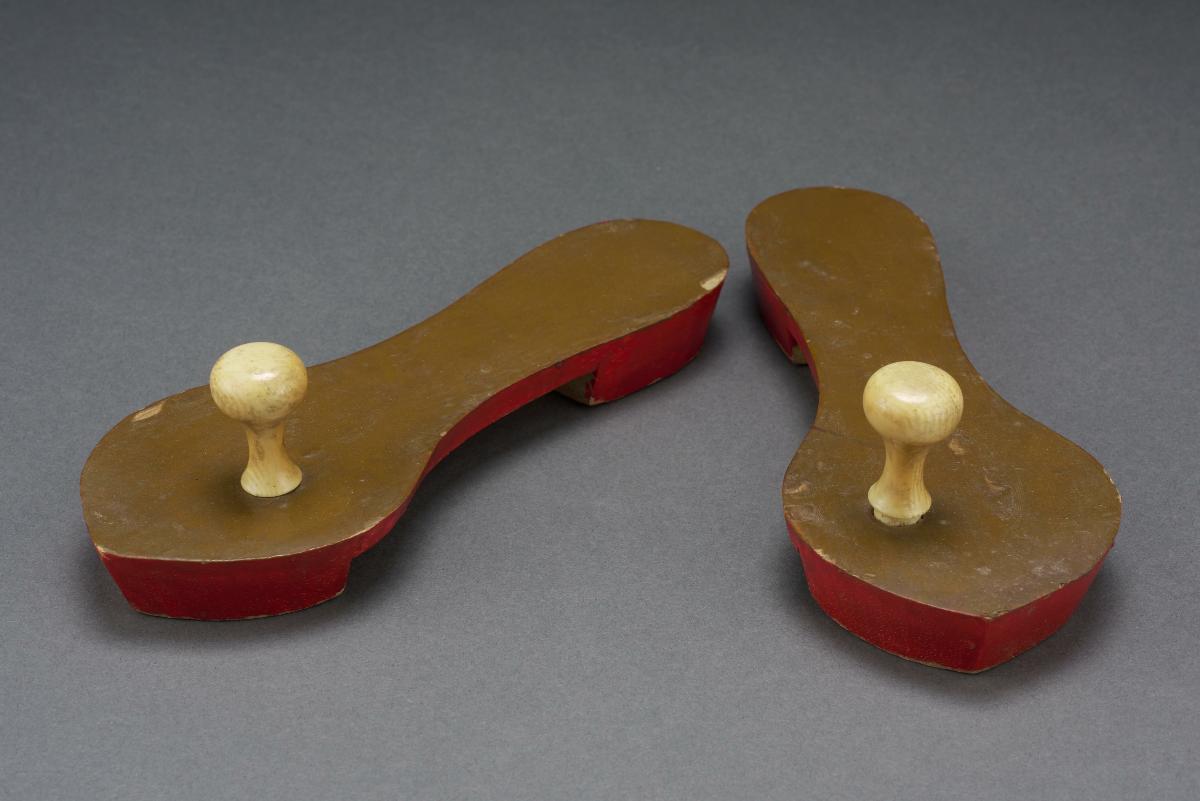The long Chinese opium pipe, unlike the smaller tobacco water-pipe, is designed to distil rather than combust opium pellets. These pellets are placed in the pipe and held over a lamp for smoking. As the heated opium vaporises, a black sooty residue known as dross is deposited on the inside of the pipe head. British-run opium houses in Malaya supplied opium in small lead tubes. They also sold small portions of dross for those who could not afford opium. When smoked, dross is particularly toxic for the liver.















